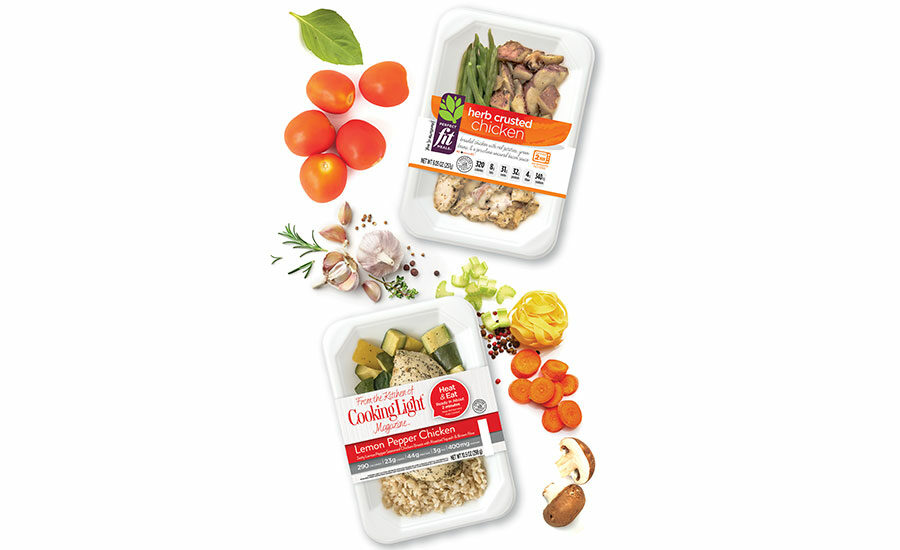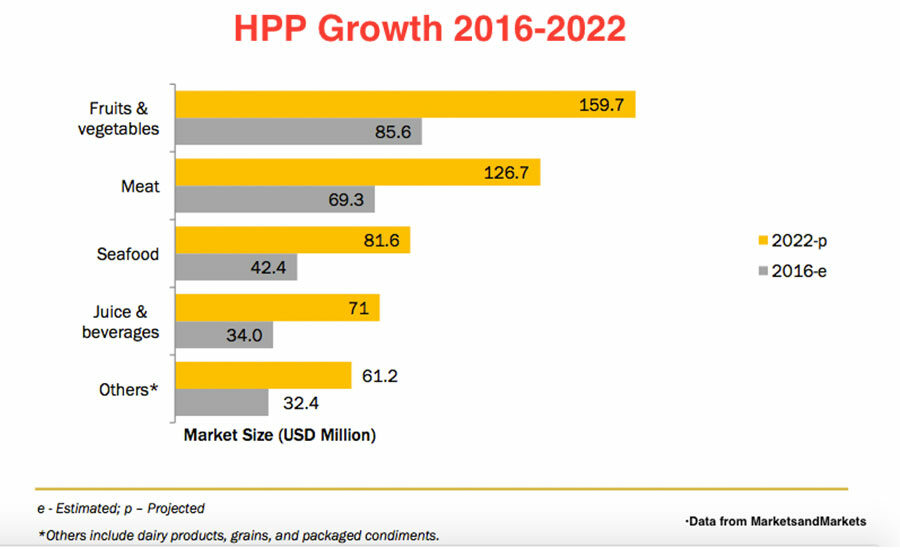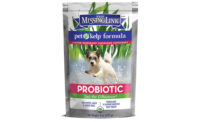HPP: Growing Market Brings Advances
Q&A with Jeff Williams, Vice President and General Manager, JBT/ Avure Technologies



Jeff Williams, Vice President, General Manager Avure Technologies



Prepared Foods: HPP certainly has gained popularity during the past three to five years. What has sparked that growth?
Jeff Williams: High pressure processing is a natural method of food pasteurization that uses pure cold water, and up to 87,000 psi (6,000 bar) to inactivate pathogens and dramatically extend shelf life. Essentially, it’s the ultimate clean label process because it helps manufacturers eliminate chemicals, additives as well as the product degradation associated with heat processing.
Most food executives are aware of the food safety benefits with HPP. Another important component is that HPP can help extend natural product shelf life. Extended shelf life not only reduces scrap or waste in our food supply, but also enables manufacturers to expand the geographic distribution of their products. No other technology provides the same range of benefits relative to nutrition, safety and shelf life extension.
Meanwhile, this is a win-win when you think about consumer trends. Their desire for clean label, natural, fresh foods and beverages is a natural fit with HPP.
PF: We understand HPP’s initial use goes back 20 years in meat processing. How has the technology expanded to new food and beverage categories?
Williams: We are certainly seeing more and more SKU’s—across every category—using HPP. The emerging categories include soups, baby food, pet foods, new beverage alternatives and ready-to-eat meals. We’re even seeing progress involving ingredients, which go through the HPP process and then are integrated into other non-HPP finished goods.
A key category you typically would not see is foodservice. Restaurants are emphasizing fresh, natural and safe foods—just like consumers at home. So, interestingly, behind the scenes we also see more and more finished restaurant foods and ingredients moving to HPP.
There are many new applications coming that are currently in the lab, which no one is thinking of right now. You’ll start to see those in stores next year. Finally, there are a number of products currently on the market that do not use HPP—but in the coming year or two, you will see these items shift to HPP for a number of benefits.
PF: We’ve heard about a new HPP trade group, the “Cold Pressure Council.” Why was it created and what’s the CPC’s role?
Williams: There were several drivers behind the formation of CPC. First was the desire that everyone using HPP technology follows proper processes and procedures—with no shortcuts. HPP is a fantastic technology and we do not want any “bad actors” misusing the technology and creating a bad image for it.
Another driver was the desire by many existing and new brands to have a logo program that would identify that product as “cold pressured” and verified. This signifies that they are following the proper guidelines for safety, validation and the HPP process. The third driver was to create an independent organization to help foster the growth and development of HPP overall.
For several years, there have been several different groups—including HPP equipment manufacturers, users and third-party toll providers—all working independently on their own agendas. Thankfully, we all were mostly pursuing the same objectives. In 2016, a small subset of these groups got together and committed both resources and seed money to form the council. In the first quarter of 2017, several additional HPP users made similar commitments and the CPC began to take shape with its founding members.
The new HPP Council will develop industry best practices, establish guidelines for the Cold Pressure Verified label program and promote and grow overall HPP. High pressure processing transitioned from the lab to the production floor almost 20 years ago. Now, it is gaining greater use with food companies for a variety of products including meat, seafood, guacamole, juices, dressings, hummus, salsa, baby food and smoothies.
PF: Who are the CPC’s founding members?
Williams: There are nine founding Cold Pressure Council members including both HPP technology leaders and food companies. They include Avure Technologies, Hiperbaric, American Pasteurization Company, Universal Pasteurization, Suja, Campbell Soup, Evolution Fresh, West Liberty Foods and Good Foods Group.
PF: We’ve heard about the new consumer HPP seal. Can you tell us about when it will launch?
Williams: The Cold Pressure Verified seal will should become available in the next several months. The CPC is completing guidelines for membership and use of the seal, which will be complete shortly.
PF: Just to wrap up with a follow-up note. Why is the CPC introducing an official seal now, even when HPP has been around for 20 years?
Williams: There have been numerous seals and logos used by many companies over the past 10 years but without a common meaning or guidelines for use. Many different brands have asked that a common seal be created for those using and representing HPP technology properly. The seal will represent a product that has been properly produced following the appropriate HPP guidelines, which will be independently verified.
Visit https://www.avure-hpp-foods.com to learn more about HPP and JBT / Avure Technologies.
Looking for a reprint of this article?
From high-res PDFs to custom plaques, order your copy today!








